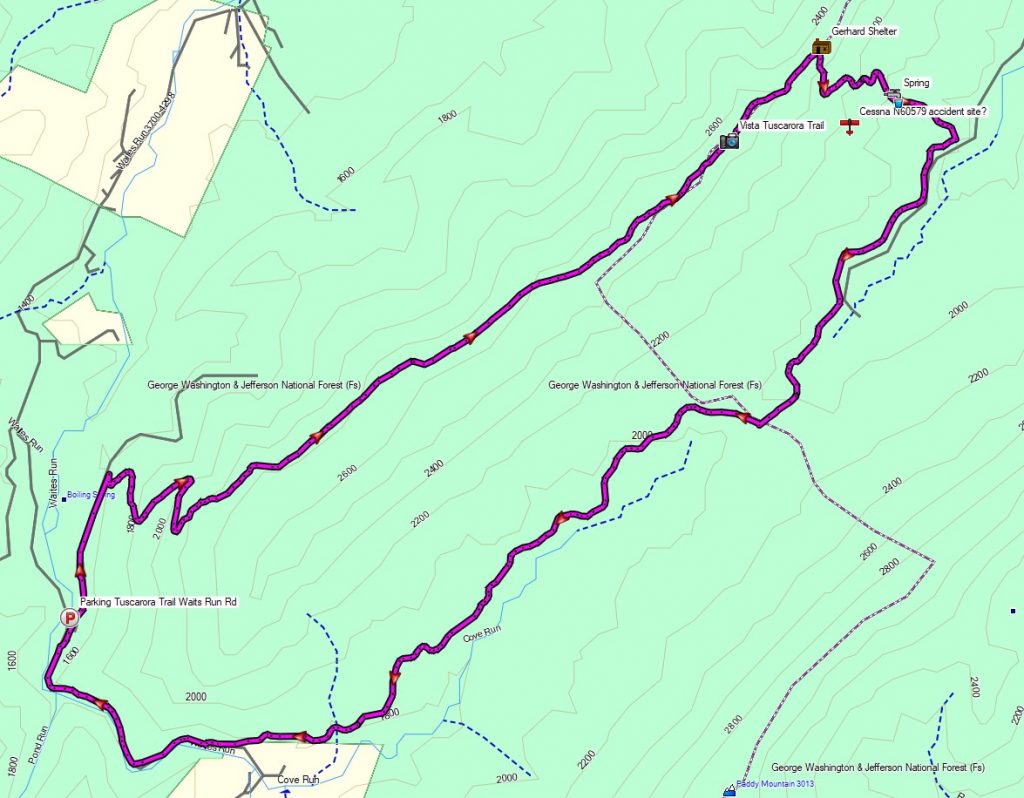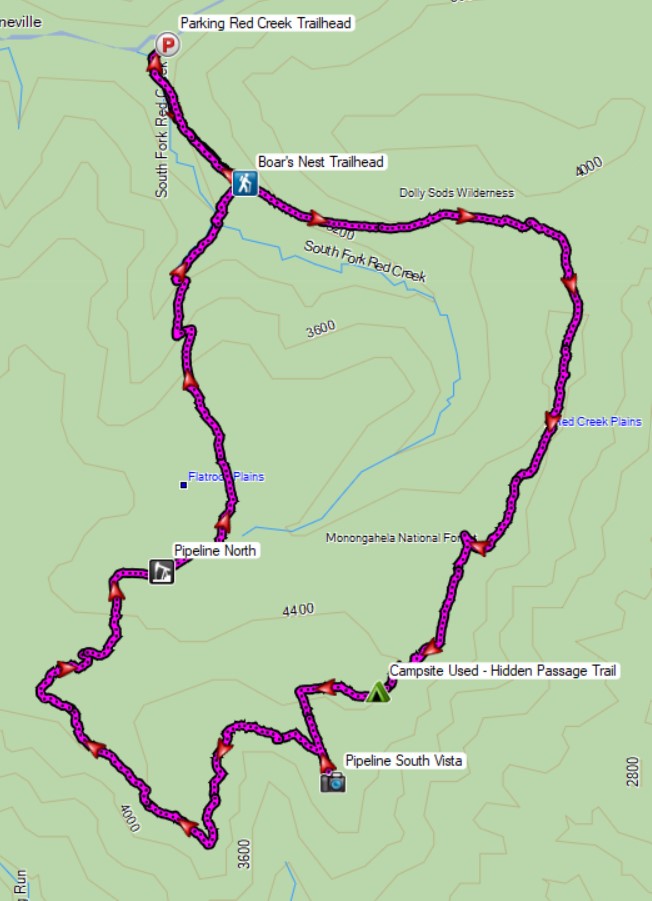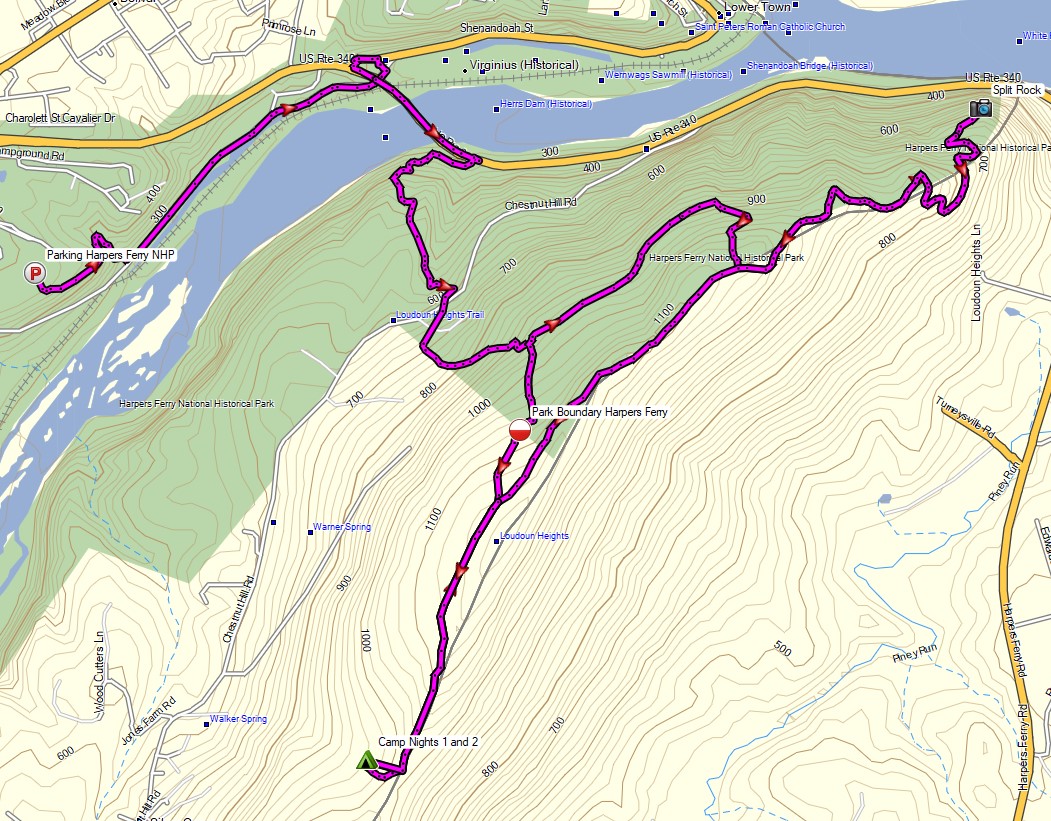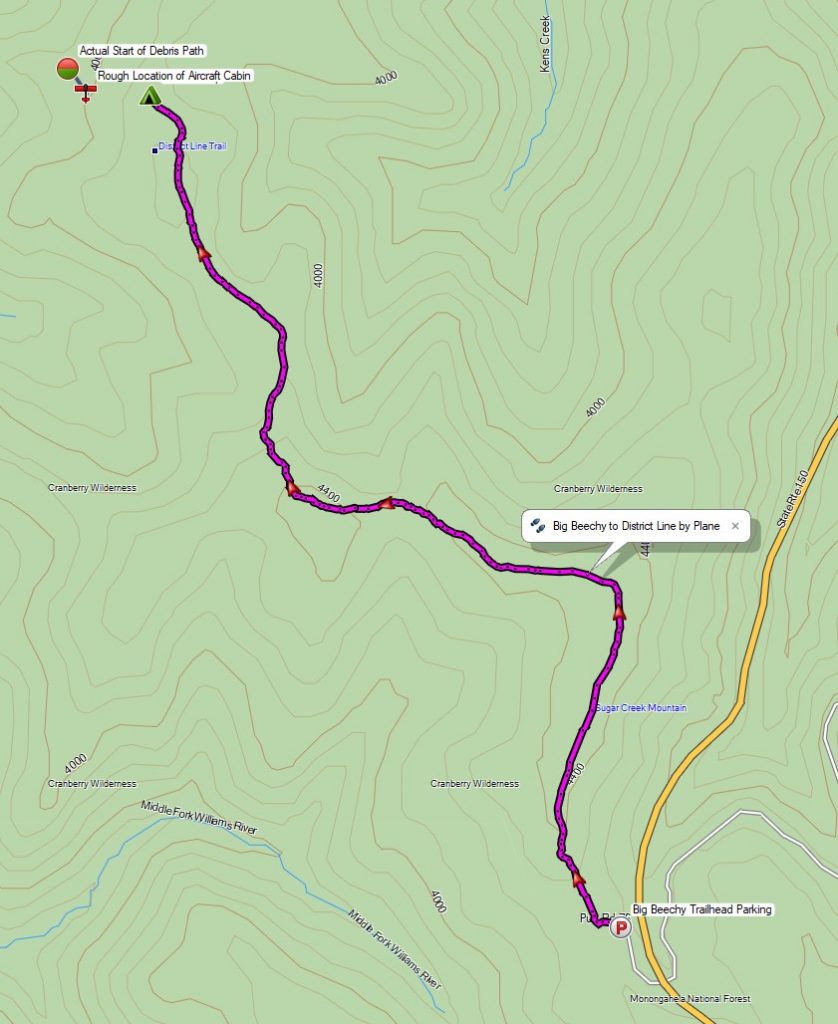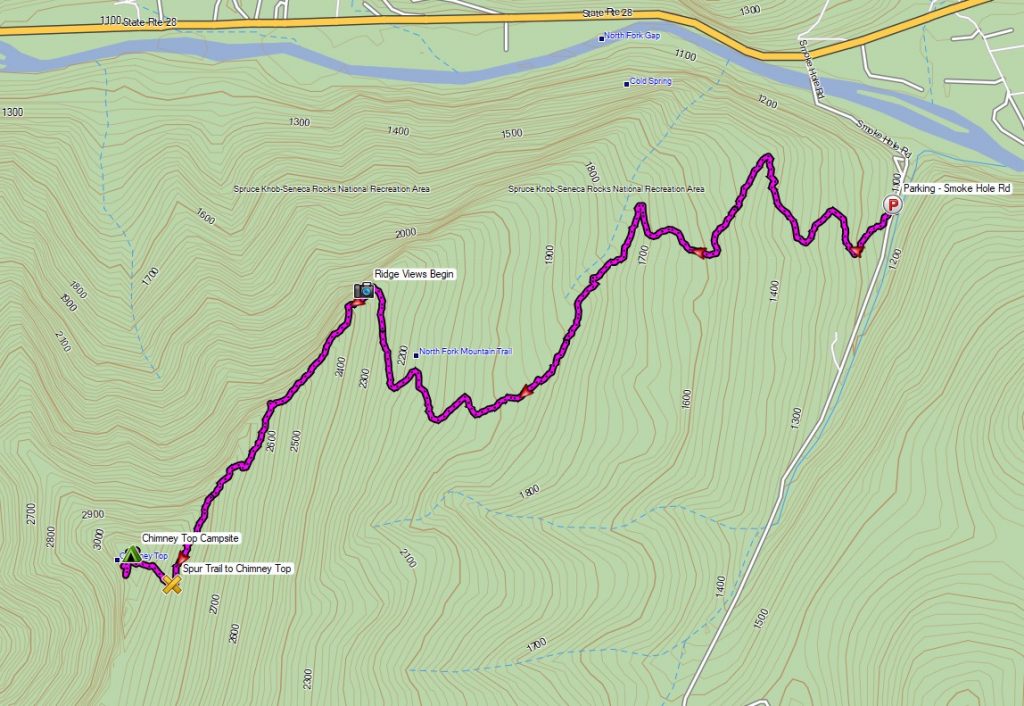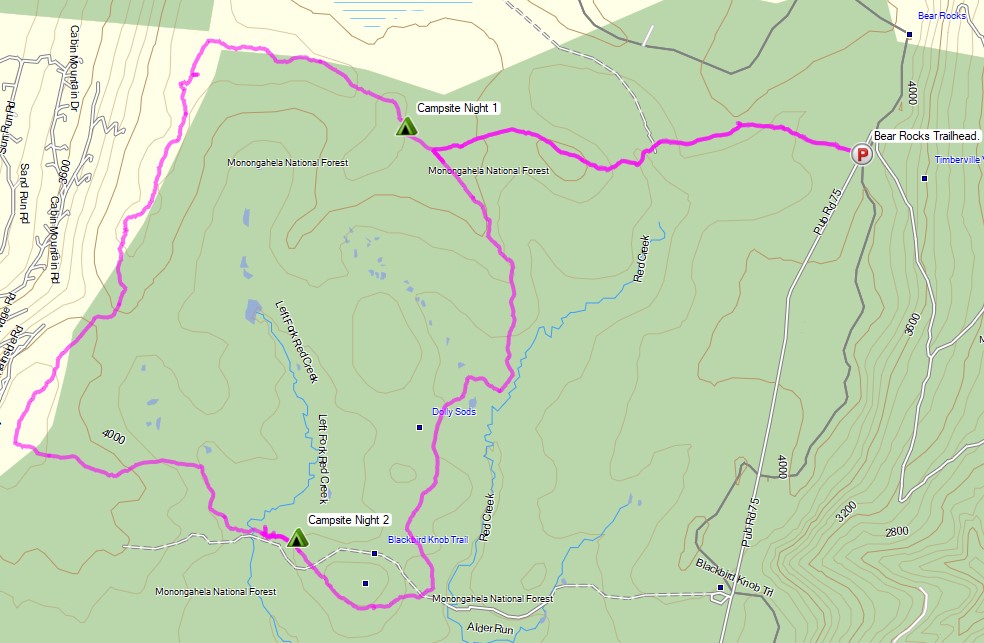3 days of Backpacking and Hammock Camping on Virginia’s Tuscarora Trail.
For this backpacking trip, I decided to head down to the border of West Virginia and Virginia to check out a pretty cool mountaintop lean-to shelter and do a little airplane scavenger hunt in-between the occasional rain showers that always tend to follow me around. On day one I would hike up to the ridge using the Tuscarora Trail, day two I would base camp and explore, and on day three I would hike back out via a different set of trails to complete the loop.
My options for shelter would be to either use the Gerhard Shelter lean-to if I had the place to myself, or a lightweight tarp and minimalist hammock if I decided to wander out further into the woods and camp near the search area and nearby spring.
My April temperature range for this trip was between 40° and 75°. This allowed me to get my backpack’s base weight down to around 10 lbs, while still including my puffy jacket and ultralight rain jacket for supplemental warmth at camp if needed.
The details of the aviation accident site that I was looking for can be found here. It was a small Cessna 150J that went down due to engine power loss and fortunately their were only minimal injuries to one of the two passengers. I’ve never read any reports of anyone actually finding or visiting this site, so I really had no idea if there would be anything to be found. But hey, it was a good excuse to get out into the woods, so I grabbed my pack and headed out for some adventure…

